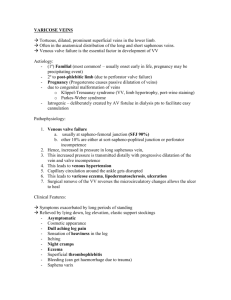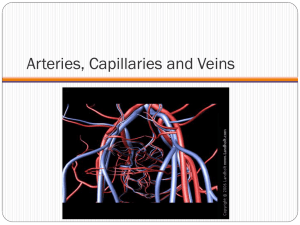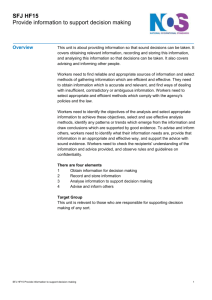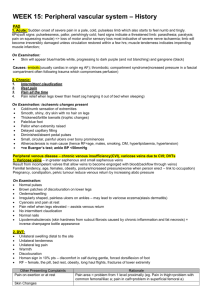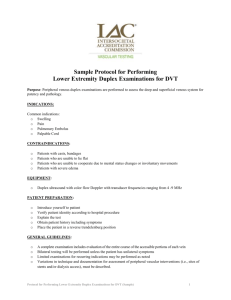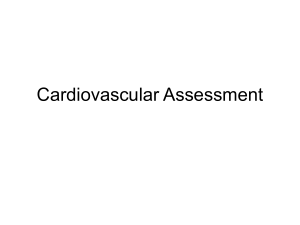VENOUS EXAMINATION OF THE LOWER LIMB
advertisement
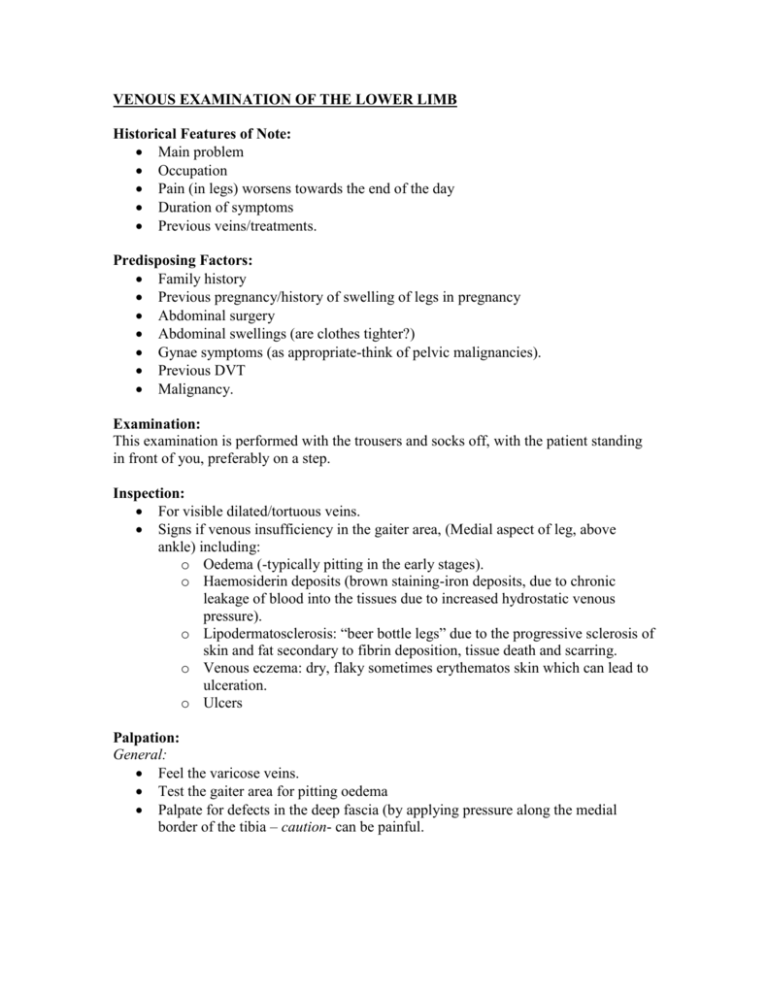
VENOUS EXAMINATION OF THE LOWER LIMB Historical Features of Note: Main problem Occupation Pain (in legs) worsens towards the end of the day Duration of symptoms Previous veins/treatments. Predisposing Factors: Family history Previous pregnancy/history of swelling of legs in pregnancy Abdominal surgery Abdominal swellings (are clothes tighter?) Gynae symptoms (as appropriate-think of pelvic malignancies). Previous DVT Malignancy. Examination: This examination is performed with the trousers and socks off, with the patient standing in front of you, preferably on a step. Inspection: For visible dilated/tortuous veins. Signs if venous insufficiency in the gaiter area, (Medial aspect of leg, above ankle) including: o Oedema (-typically pitting in the early stages). o Haemosiderin deposits (brown staining-iron deposits, due to chronic leakage of blood into the tissues due to increased hydrostatic venous pressure). o Lipodermatosclerosis: “beer bottle legs” due to the progressive sclerosis of skin and fat secondary to fibrin deposition, tissue death and scarring. o Venous eczema: dry, flaky sometimes erythematos skin which can lead to ulceration. o Ulcers Palpation: General: Feel the varicose veins. Test the gaiter area for pitting oedema Palpate for defects in the deep fascia (by applying pressure along the medial border of the tibia – caution- can be painful. Groins: Saphenofemoral junction, ?varix. (SFJ located 2cm below and lateral to the midpoint of the inguinal ligament. Cough impulse/thrill over the SFJ. The Tap Test: Place right hand over a distal portion of varicose vein. Tap the vein proximally (e.g. 10-15cm proximally) with your left hand. A fluid thrill felt distally with the right hand implies the presence of incompetent valves within the vein i.e. retrograde flow. The Tourniquet Test: Lie the patient down on the couch . Sit on the couch facing the patient, gently lift the lower limb resting the ankle on your shoulder. Using both hands, massage up the leg, emptying the veins, then apply the tourniquet to the upper thigh (just below the SFJ). Ask the patient to stand up. Do the veins fill up immediately? YES: perforator vein incompetence below the tourniquet. NO: varicose veins controlled at the SFJ. Note, when performing this test, if you are unable to empty the veins, suspect AV-fistula, or mechanical obstruction proximal to the SFJ. The Trendelenburg Test:-now outdated, Doppler assessment of the SFJ is preferred. As for tourniquet test. Instead of applying the tourniquet, press firmly into the SFJ with two fingers after emptying the veins. Stand the patient up, maintaining the pressure on the SFJ. Do the veins fill up immediately despite control of the SFJ: YES: perforator incompetence below SFJ NO: SFJ incompetence responsible for varicosities. Release the pressure on the SFJ, and the veins will re-fill promptly, confirming incompetence of the SFJ. Perthe’s Test: As for tourniquet test. Apply tourniquet to the upper thigh (below SFJ) after draining veins. Ask pt. to stand. Ask patient to stand up/down on tiptoes repeatedly: VEINS IMPROVE: deep venous system working effectively VEINS WORSEN/DISCOMFORT: ?deep venous obstruction, rule out DVT. To complete the Examination: Offer ABDO and RECTAL examination (for masses).
